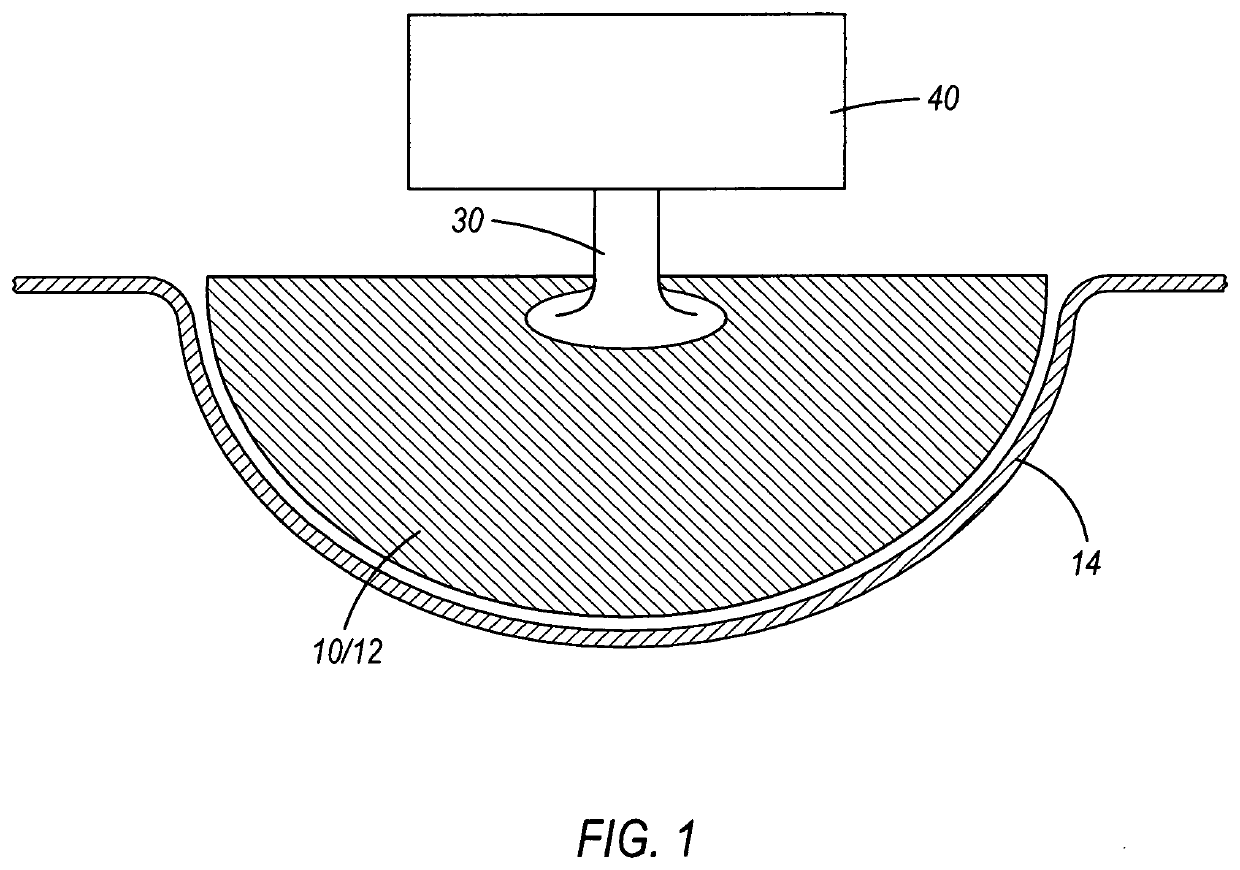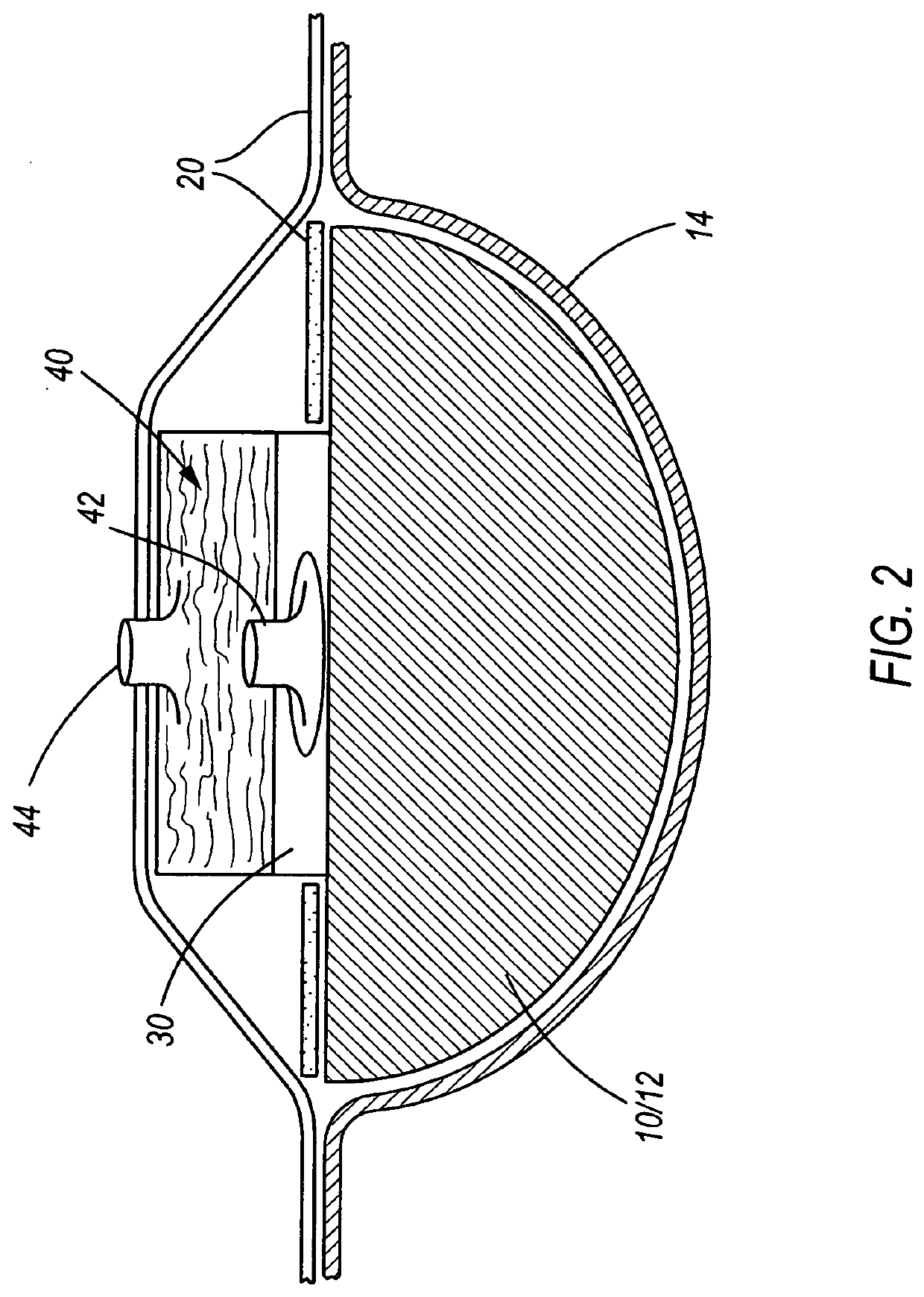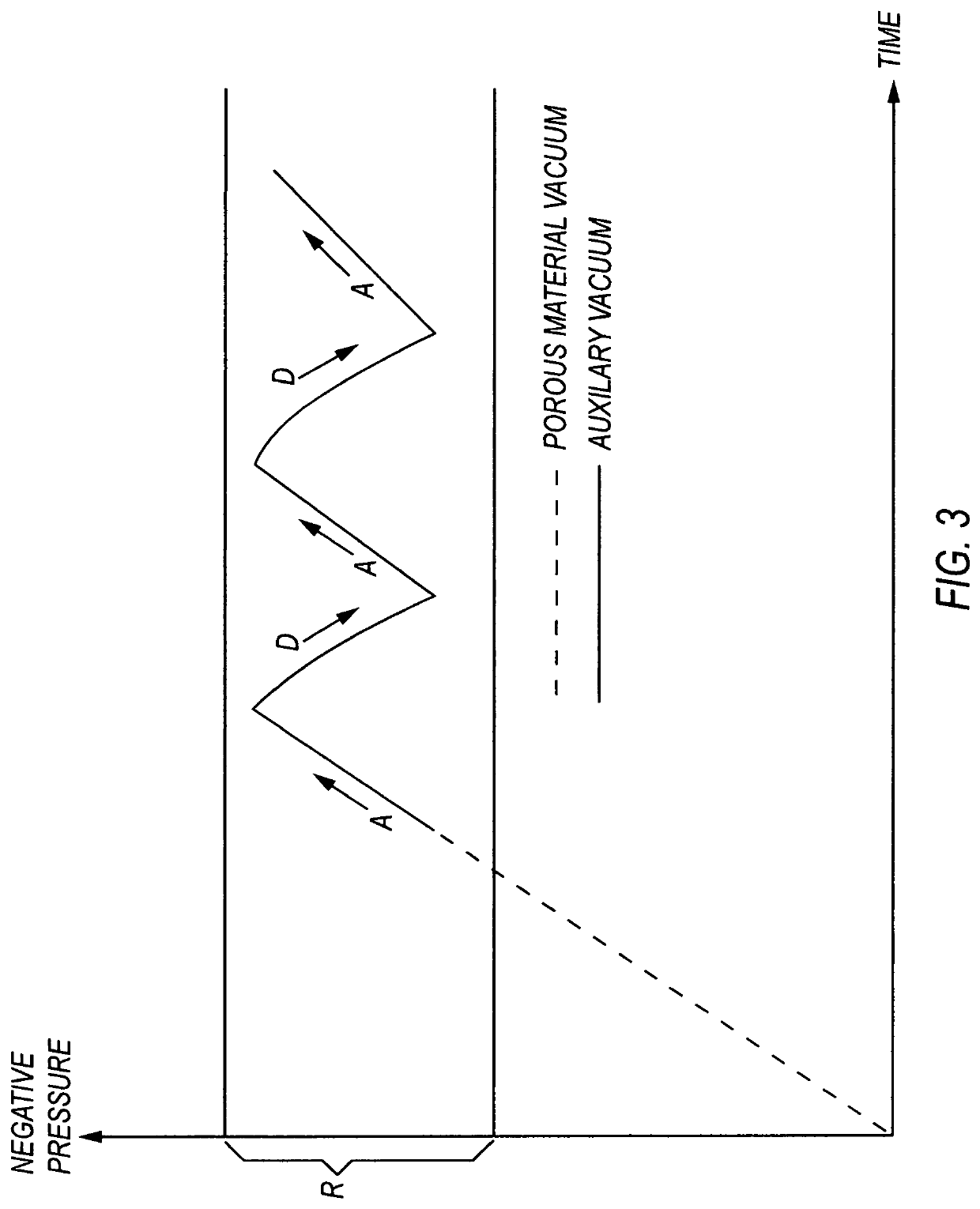Wound Dressing containing a vacuum pump
- Summary
- Abstract
- Description
- Claims
- Application Information
AI Technical Summary
Benefits of technology
Problems solved by technology
Method used
Image
Examples
Embodiment Construction
[0032]The present invention is a negative pressure wound therapy (NPWT) system where the reduced atmospheric pressure on the wound is achieved by two sources, (1) a porous sponge dressing material and (2) an auxiliary vacuum unit, e.g. a pump. The porous sponge dressing material is a PVA foam which provides a natural capillary pressure of about −20 mmHg to about −72 mmHg on the wound. The auxiliary pump can further reduce the pressure to maintain a therapeutic benefit, e.g. down to about −120 mmHg. The result is a NPWT system that is portable by the user and is significantly smaller than prior art devices and with minimal to no tubing required to connect the dressing to the auxiliary vacuum source.
[0033]As is used herein, reduced or negative pressure levels, such as −X mmHg, represent pressure levels relative to normal ambient atmospheric pressure, which corresponds to 760 mmHg (or 1 atm, 29.93 inHg, 101.325 kPa, 14.696 psi, etc.). Accordingly, a negative pressure value of −X mmHg r...
PUM
| Property | Measurement | Unit |
|---|---|---|
| Pressure | aaaaa | aaaaa |
| Pressure | aaaaa | aaaaa |
| Volume | aaaaa | aaaaa |
Abstract
Description
Claims
Application Information
 Login to View More
Login to View More - R&D
- Intellectual Property
- Life Sciences
- Materials
- Tech Scout
- Unparalleled Data Quality
- Higher Quality Content
- 60% Fewer Hallucinations
Browse by: Latest US Patents, China's latest patents, Technical Efficacy Thesaurus, Application Domain, Technology Topic, Popular Technical Reports.
© 2025 PatSnap. All rights reserved.Legal|Privacy policy|Modern Slavery Act Transparency Statement|Sitemap|About US| Contact US: help@patsnap.com



